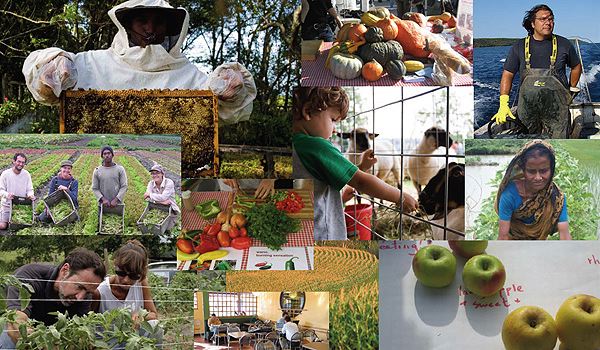California food startups may hold the key to economic recovery

Can food lift California out of its recession? A mounting body of evidence points to yes. Local food startups that only source labor and materials from local and regional businesses as part of a “community food enterprise,” or CFE for short, increase prosperity and employment at the local level. CFEs keep ownership and employment a near proximate affair, growing community capital and cultivating a bountiful crop of entrepreneurs to keep the cycle going.
CFEs distinguish themselves from typical local food economies by bringing together more than just farmers and consumers. A true CFE seeks the luxuries of a global food system, only on a hyper-local level. Every link in the production chain – from growers, processors, packers, distributors and marketers – is locally sourced and all are locally or regionally aimed.
A recent San Francisco Chronicle piece provides the quintessential CFE anecdote: Bi-Rite, a San Francisco grocer, says 90 percent of its employees live within walking or bicycling distance of the store. Also, the company only uses local designers, printers and sign makers.
And the cycle continues,” reads the article. “Last year Bi-Rite started showcasing Michele Manfredi's SFQ Original San Francisco-style Barbecue Sauce in its store when her company was a tiny startup and she did everything by hand. SFQ is still fairly small, but now Manfredi can afford to outsource her kitchen work, jarring and label making. She could probably save money by scouring the Internet for cheap labor, cheap jars and even cheaper labels. But she's decided to go regional - most of her ingredients are sourced in the Bay Area, her jars are from an Oakland company, her labels are from Napa, and her preparation and jarring are done in Healdsburg.
According to owner Sam Mogannam, last year Bi-Rite spent close to $7 million doing business with regional companies, mostly Northern California-based small businesses.
Neighbors attending to neighborly needs by offering jobs represents the basic socio-economic push behind the steady growth of CFEs in recent years. Other factors, including changing consumer demand toward local/sustainable goods and services, have cultivated fertile ground for food-enterprisers. Opportunities are prevalent now that local food markets have grown into economies of regional scale after a decade plus of continuous expansion.
The report, Community Food Enterprise: Local Success in a Global Marketplace, published by the Wallace Center at Winrock International, says that price is a major factor in the current success of CFEs:
As more CFEs enter the marketplace, local food prices are trending downward. CFEs themselves are learning how to bring down their costs through greater volume, through smarter distribution techniques, through the better use of technology, and through collaboration with other CFEs.
Michael Shuman, economist, research director for the Business Alliance for Local Living Economies (BALLE) and lead author of the report calls the CFE the model of future food and fiscal policy.
"There's good evidence to show that CFEs generate more jobs - two to four times the amount per dollar of sales - and generate more income and wealth for (their) communities than non-locally owned businesses, even ones that source goods from the area," Shuman told the Chronicle. Shuman is also research director for Cutting Edge Capital, an Oakland venture capitalist company specializing in innovative financing.
Recognizing the economic pitfalls inherent in a global food system, the US Department of Agriculture has been quick to support the CFE movement. The agency has guaranteed loans to farmers who practice the model.
"Studies show that farmers who sell locally and regionally employ 13 full-time workers per $1 million revenue earned," said Deputy Secretary of Agriculture, Kathleen Merrigan. "Farmers who don't sell locally or regionally employ three workers for every $1 million in revenue earned."
The last time the numbers were gathered California farmers' markets pulled in roughly $163 million in direct marketing sales. That was in 2007. Since that time, locavorism (by all indications) has increased. With the regionalization of distribution and merchandising industries through CFEs, no matter what the current revenue stats show, it is all but guaranteed that a much greater percentage of those dollars are now staying closer to home -- reinvested into a stronger community.




